“Sing Sing” Is a Testament to the Rehabilitative Power of Art in Prisons
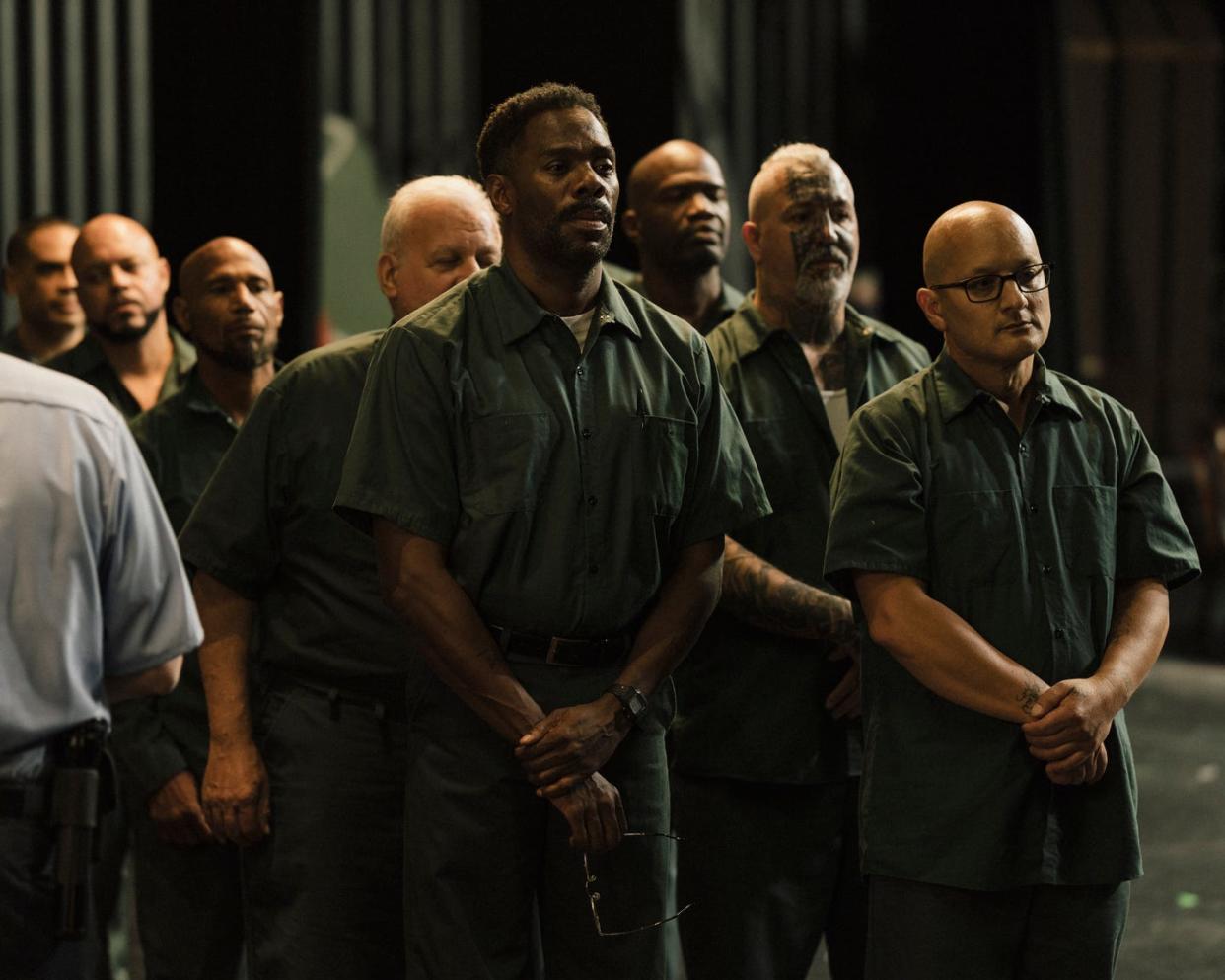
JJ Velasquez came home from prison only 10 months before he began filming Sing Sing. In July of 2022, the actor found himself on set at a decommissioned prison in Fishkill, New York. Formerly known as Downstate Correctional Facility, it was meant to mimic the A24 film’s titular prison, a mere 40 minutes away. For his costume, Velasquez donned what looked like his old green prison uniform, and, surrounded by his castmates, the majority of whom were also formerly incarcerated, he remembers asking, with more than a hint of sarcasm, “Did anybody ever fathom putting these greens back on?” Every Sing Sing cast member I interviewed underlined that the film’s mission propelled them forward. “Our apprehension got outweighed by the purpose,” one of the film’s protagonists, Clarence “Divine Eye” Maclin, says. “We stand on the shoulders of a lot of brothers that sacrificed for us to be here, and we know the power of what this program can do.”
Maclin is referring to Rehabilitation Through the Arts, a program that teaches the arts as a channel for healing and coping skills inside six men’s and women’s prisons in the state of New York. Based on the true story of RTA members putting on the 2005 original production of Breakin’ the Mummy’s Code—a musical time-travel comedy that interweaves gladiators, cowboys, pirates, and even Hamlet into its fantastical plot—Sing Sing centers on the friendship between Maclin, who plays himself, and John “Divine G” Whitfield, played by Colman Domingo. The plot also captures the two men’s pursuit of freedom, with a particular focus on Whitfield’s real-life battle over a wrongful conviction that stood for more than two decades.
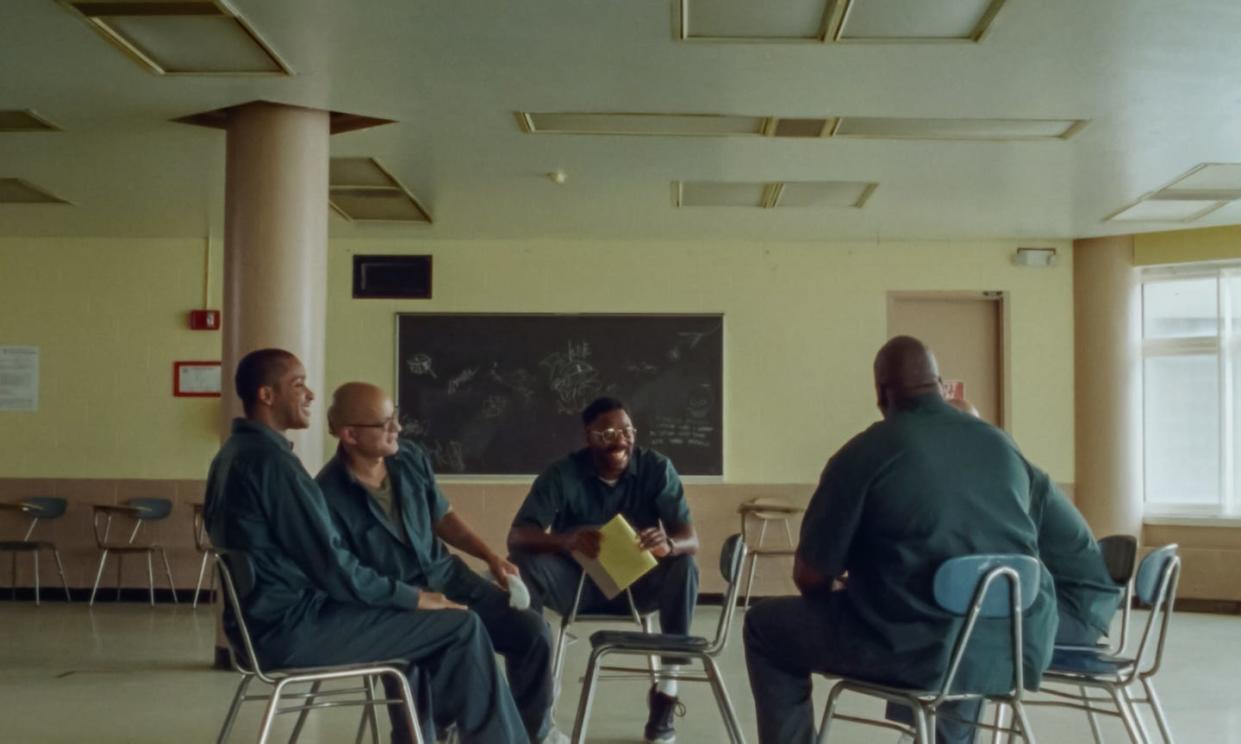
The making of Sing Sing, which will be released nationwide on August 23, started eight years ago, when director Greg Kwedar was producing a short documentary inside a Kansas prison. While on tour, he saw a man working with a rescue dog in his cell. “In that moment, all of my expectations of incarcerated people—a lot of which were built on the movies I’d seen—were upended,” he says. “There was love in that room.” Inspired by programs “doing things differently,” Kwedar soon discovered an Esquire article covering the aforementioned Mummy’s Code. “I was struck by the tone of [the play] more than anything, the playfulness of the work juxtaposed against the environment that it was set within,” he recalls. He approached his writing partner Clint Bentley, and the two reached out to RTA teaching artist and playwright Brent Buell (played by Paul Raci in Sing Sing), who organized a meetup with program alumni in New York City. Bentley says he and Kwedar “left changed,” hoping to translate the power of this fellowship to the big screen.
The Sing Sing team, which went on to feature producer and community-oriented filmmaker Monique Walton, “didn’t want to jam our preconceived notions [into the plot],” Kwedar says. “We wanted the story to be birthed from our time amongst these people.” Part of this approach meant volunteering as RTA teachers at Green Haven Correctional Facility, about 70 miles north of Manhattan. “As each one of those gates closes, you feel this deep, visceral fear start to grow in you,” Kwedar says of entering the facility. “But crossing this threshold into the classroom [is] like going from black-and-white to color, with this intense desire for connection.” Whenever the team tried to put these experiences on paper, though, Kwedar says, “it felt like an imitation.” Having decided the film would hone in on Maclin and Whitfield’s friendship, they invited the two, alongside Domingo, to cowrite the script. That’s when the color happened.

Regarding the creative writing process, Domingo says the team “created a brain trust … and figured out how to make this thing from all of our vast experiences.” For the Oscar-nominated actor, this meant tackling themes around “brotherhood, tenderness, and watching Black and brown men dispel ideas about who we are.” For Maclin, it was important that the writing accurately depicted incarceration, countering stereotypical imagery and dialogue from “the last 40 prison shows that have come out, [where] I never saw me in any of them.”
Ultimately, it was the cast members—13 of whom were RTA alumni playing versions of themselves—who brought Sing Sing to life. They are inarguably the greatest part, the core, of the film. “Whenever we come together, it’s more like a reunion, it’s not even like work,” Maclin says. “We’re creating, and that’s what we’ve always done when we come together.” This chemistry, combined with a personal connection to incarceration, is palpable. And consequently, the scenes in the film that deliver the most intimate of gut punches are not those that lean into violent tropes; instead, they are delicate moments of joy, humor, passion, and sincerity born from these men learning to love themselves and each other.
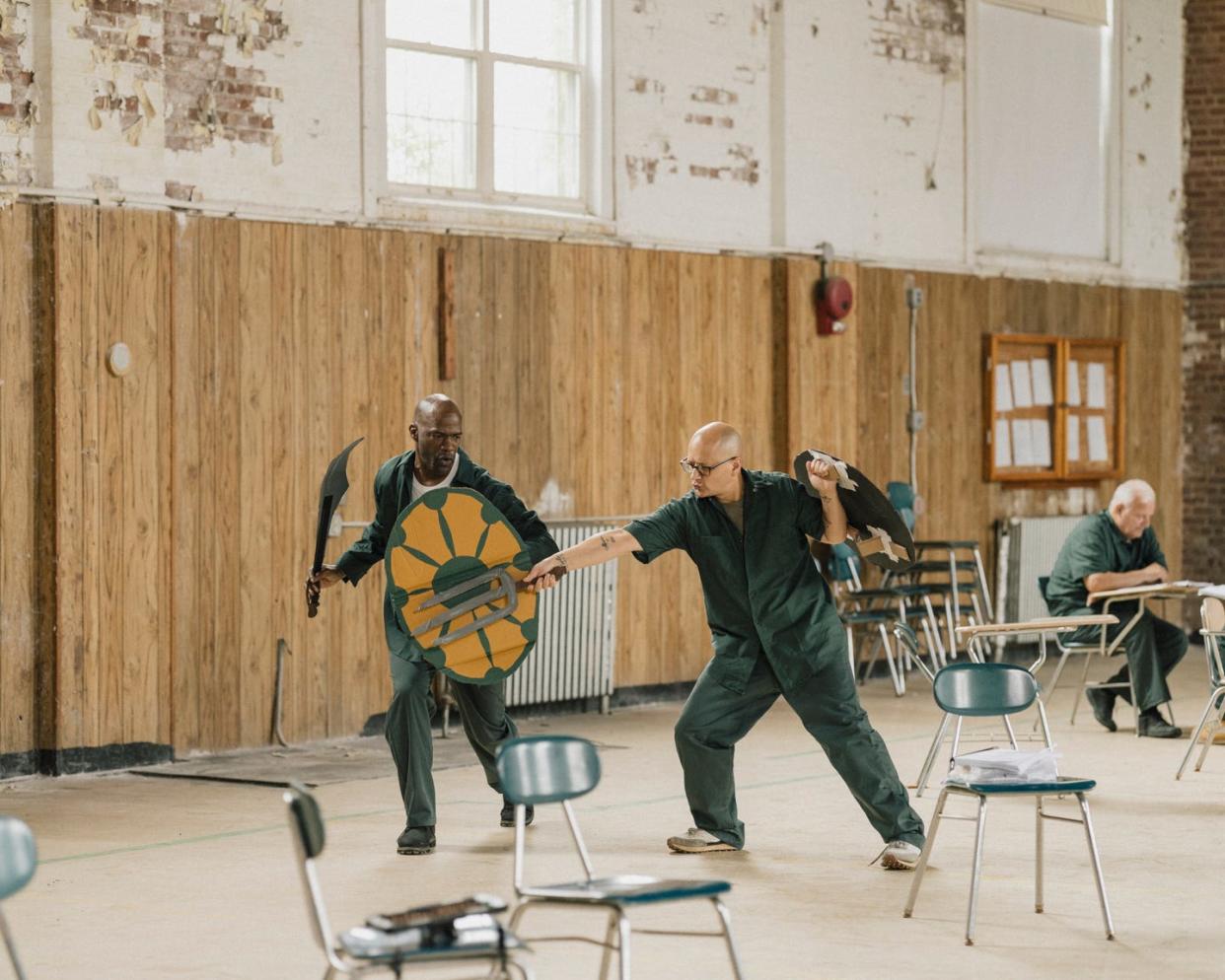
The process of making Sing Sing was just as valuable as the final result. Inspired by Whitfield’s main mission for RTA—to “show the brothers love, always give everybody a shot, and come up with techniques that make love contagious”—all participants in the film prioritized taking care of each other over making a blockbuster movie. Perhaps ironically, it was this approach that delivered a masterpiece. This type of care was also crucial for a cast that had to revisit a traumatic period of their lives. Some moments were particularly difficult, such as when the fictional character Mike Mike dies. “That scene hit us all,” Maclin says, “because every one of us knows somebody who’s passed on the bid and is never gonna make it home.”
The filmmakers were adamantly against using traumatic stories from the actors for the sake of a dramatic trailer cut. “We wanted to give the actors the space to offer what they would like … without being extractive,” Bentley says. For example, Sean “Dino” Johnson had shared a story with Kwedar and Bentley in which someone else’s blood had spattered on his face in the mess hall at Attica Correctional Facility, and he found himself unable to move. This had been a pivotal moment for the RTA alum. “We had paid attention through our time together,” Kwedar says of shaping one of Johnson’s big moments onscreen. “We said, ‘Hey, is this important to share? Is it something you want to bring in?’ We asked because we were touched by it, but it was never a mandate.” The result is a powerful monologue on the incessant violence people inside are forced to face, the abnormal numbness developed in response, and how, through RTA, Johnson has chosen to reject that.
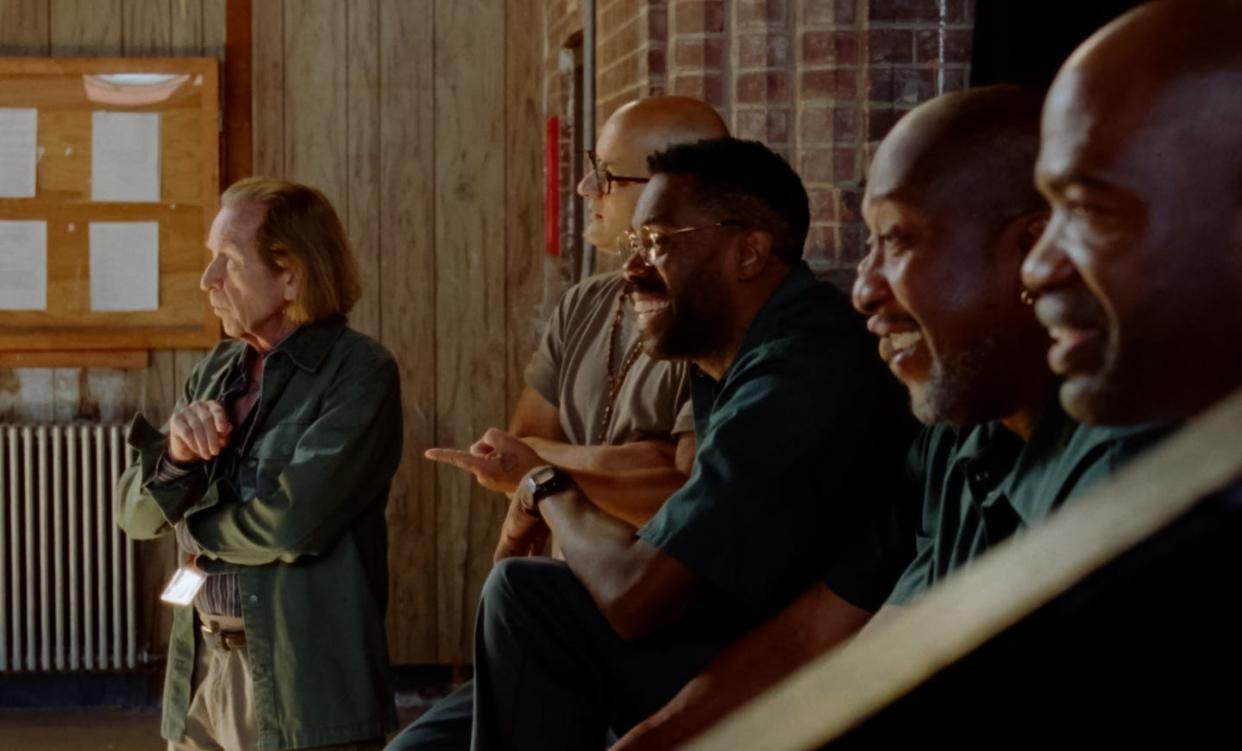
Amidst poignant, improvised scenes stemming from painful memories, there were also gentle moments. For one, the audience learns early on in the film that RTA members use the term beloved in place of the N-word when referring to each other. When Maclin first shared this, it brought Domingo to tears; he asked if it could be integrated into the script. Another such instance involved a real RTA exercise, in which participants close their eyes and imagine their “perfect spot.” Thirty-five minutes into the movie, we watch the actors describe these places: Camillo “Carmine” Lovacco describes the picnic he and his late wife shared in June 1972 by the lake in Brooklyn’s Prospect Park, how he told her he loved her while sipping Manhattan Specials. Johnson smiles, picturing his dog licking him all over while he lies in freshly cut grass. Maclin simply says, “Spending time with my son and daughter, just watching them grow, living their life.” The scene, demonstrative of the far-too-often ignored breadth and depth of incarcerated people, was not prewritten. Whether he’s talking to the RTA alumni themselves or their characters, Raci’s Buell wraps it with, “I think you guys are becoming actors.”
Domingo says that Sing Sing “really transformed the way I believe we [should] produce, because it was so equitable, the company was diverse, and everyone feels good about how it was made.” This approach trickled down to the film’s pay structure, in which every contributor—from the production assistant to Domingo—was given equity and paid the same rate, the only variable being time put in. This financial model communicates that, in Kwedar’s words, “everyone has the same intrinsic value, that your ideas have equal weight.” It’s this level of emotional and financial investment that sets Sing Sing apart. “That word care is something we need more of in our industry,” Domingo reflects. “This is the kind of work as artists that we can do, and it’s truly transformative.”
Sing Sing is not trauma porn, nor is it a toxically positive reframing of oppressive systems à la Driving Miss Daisy. The final product humanely depicts people impacted by incarceration and simultaneously introduces a roster of breakout actors. In fact, as of this writing, industry-trusted forecaster GoldDerby has Sing Sing in the lead to receive an Oscar nomination for Best Picture, and Domingo (Best Actor), Maclin (Best Supporting Actor), and Kwedar (Best Director) hovering near the top of the odds rankings in their own categories. This would be a historical showing for the awards.
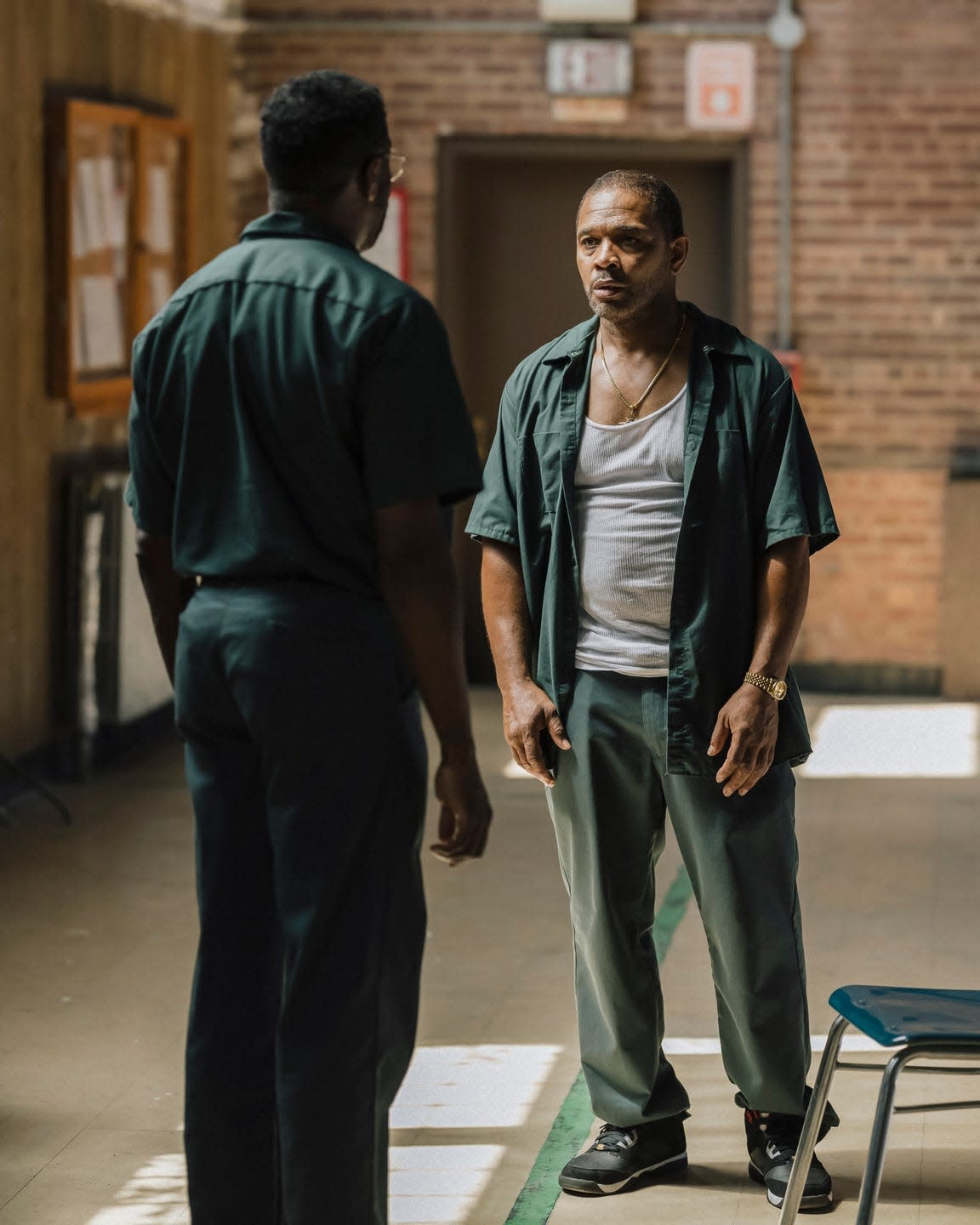
But the ultimate stamp of approval will not come from film critics or the Academy. It instead has come from those with lived experience who see the film, including men still incarcerated at Sing Sing. The film premiered inside the upstate facility on a Thursday in June in the facility’s chapel. Despite the 80-plus-degree heat in a building without air-conditioning, the men still showed up in droves. “I was nervous, because I wanted to make sure we did them right,” Johnson says. But the audience’s intent focus on the movie assuaged his nerves. “We saw brothers that we actually did time with, and we were going back in there to give them a message of healing,” Velasquez adds. “For them to accept it the way that they have, we know that it’s authentic.”
This rare authenticity has the power to challenge what society has normalized—i.e., the incarceration of millions of people in the United States. “A lot of media and imagery around prison and people who are incarcerated has fully ingrained itself in what we think that experience is,” Walton, the producer, notes. Sing Sing effectively counters these belief systems because, as she goes on to say, “people just can’t deny how the movie makes them feel.” Instead of directly explaining the violence behind the prison-industrial complex, the team behind Sing Sing simply shows it, and goes a step further by demonstrating what it means to replace a cycle of harm and judgment with love and care. This last principle is what we could all stand to learn from. As Domingo puts it, “If the healing can begin [in prison], and they take that into the world, how beautiful is that?”
You Might Also Like
